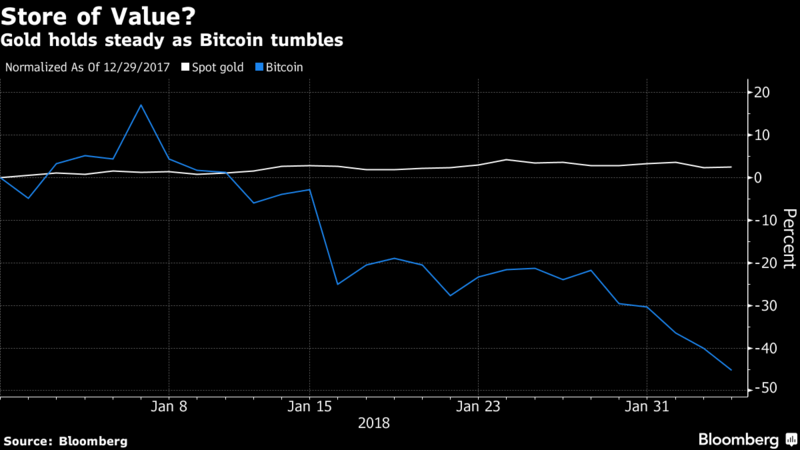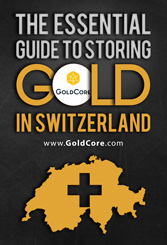– Shrinkflation continues to take hold across UK, Ireland and US for sixth year running
– Shrinkflation sees consumers gets less product, but at the same or increased price
– 2,500 products have shrunk according to Office of National Statistics in UK
– Reported inflation is between 1.7% and 3% but actually much higher
– Shrinkflation is financial fraud, unreported inflation in stealth mode
– Gold is hedging inflation and shrinkflation
Editor: Mark O’Byrne
Two bars of the Toblerone Swiss chocolate. New style 150 gram bar showing the reduction in triangular pieces (front) and older style 360 gram bar at back. Credit: Alastair Grant via The Telegraph
Your wallet might still be feeling the pinch after Christmas. Shrinkflation means this is likely to continue. Now in its sixth (official) year the phenomenon that sees you get less product for the same price is beginning to be covered more frequently.
Another example of this came last week when McVitie’s biscuits, some of the most popular digestive biscuits in the UK and Ireland, saw a 20% cut in volume, but not in price.
Officially, inflation is pretty low across the developed world. In the US, it is so low (1.8%) that it is proving to be a cause for concern for policy wonks. It is 1.7% in the EU and in the UK it is at 3%. None of those readings are a true reflection of where prices really are and how much the cost of living has increased.
One of the best measures of inflation is shrinkflation. We’ve written about it before in reference to Toblerones and toilet rolls. This time, its all about the Brits’ and Irish precious McVitie’s Digestive biscuits.
Last month the manufacturer announced they were shrinking the packet a 500g packet of 34 biscuits down to 400g. The price will be 10p less, but this is nowhere near the 20% cut in product amount.
McVitie’s insists the quality is the same. The reduction in biscuits is thanks to rising raw ingredient and manufacturing costs. Rather than increase the price onto customers they have decided to maintain quality, but with fewer biscuits.
When the UK’s rate of inflation fell from 3.1% to 3% last month, many economists and financial commentators were quick to point out that this was evidence that the era of low inflation had not yet come to an end.
The problem is inflation measures as published by central banks and campaigned upon by governments, do not give markets a real portrayal of how much living really does cost.
Shrinkflation is a real indicator of inflation
Just a simple glance at a packet of biscuits gives you more information than any RPI or CPI reading can. For example, in the case of the digestive biscuits, under the RRP of £1.25 for the 500g packet, each biscuit cost roughly 0.037 pence. Now, the price is under the RRP of £1.15 for the 400g packet, which means each biscuit costs roughly 0.043 pence.
McVitie’s is just one in a long line (2,500 to be exact) of food and other household items that have fallen victim to the invisible inflation ray that has so far eluded the sights of so many economists.
In the last four years Snickers, Toblerone and KitKat have each shrunk by at least 20% in size, not always accompanied by a matching price change. A bag of Snickers Bites rocketed from 74p per 100g to £1.26, up 70.9 per cent, whilst a four-finger KitKat bar lost just 3g in weight, dropping from 45g to 42g, a difference of 7.8 per cent, yet 100g of the snack soared by 62.7 per cent, from 89p to £1.45.
The two main culprits of rising prices, according to the manufacturers is the cost of raw materials and the weak pound, which makes imports more expensive. Obviously the pound has gained in strength recently and the European import price of sugar has been falling since the middle of 2014, and reached a record low in March 2017, but consumers shouldn’t expect these to make much difference.
A lack of innovation?
Food manufactures do not want to be seen bowing down to rising costs and passing them onto consumers. It’s obviously bad for business as most food items have straight forward substitutes to which consumers have few qualms when it comes to switching to. Yet there is also a growing view amongst the consumers that ‘rich’ manufacturers should not pass on rising costs to the poor consumer. It is bad PR basically.
But the manufacturer does still have to run a profitable business. Hence why shrinkflation is such a common phenomenon. They have been accused of lacking innovative ideas by Clive Black, head of research at Shore Capital.
Speaking at the Food Manufacturer’s Business Forum Black told leaders shrinkflation should be the last resort. He asked whether shrinkflation is “an admittance of a lack of innovation, a lack of capability to add value to a product and keep it relevant in consumers’ minds?”
It seems to me that manufacturers are perhaps showing little innovation but more likely they have little choice. Margins are being squeezed, uncertainty is rife when it comes to which manufacturers the Brexit deal will leave you able to work with and costs are rising despite statistics telling you otherwise.
The BBC has recently tried to argue that a decrease in product size sometimes means sees a bigger fall in price. However when looking at their analysis it is clear to see that products which did not increase in price were mainly those in ‘bulk buy’ or large pack products. This just shows that economies of scale makes margins less stringent.
This is perhaps the only place where ‘innovation’ can currently be seen.
Ultimately a smaller pack size does mean a higher price.
How to protect yourself from the rising of living
This is a bit like the Emperor’s New Clothes scenario. We can all see inflation is happening in front of our very eyes, yet economists and central banks are telling us the opposite.
Shrinkflation is happening and real inflation is much higher than is being reported.
Your purchasing power and your wealth can be preserved from the ravages of shrinkflation. Investments such as gold and silver by their very nature are immune to the shrinkflation effect and are an important hedge against it.

Gold prices in GBP (10 Years) via GoldCore
Next time you’re considering that packet of biscuits at the supermarket checkout, just imagine how much is missing compared to when you would have bought it say 10 years ago, or anytime before the financial crisis.
Then consider how much a bar of gold would have changed since then. The fact is that it hasn’t. You would still have the same sized gold bars (1 oz), with the same gold content or purity and they are worth a lot more now than they were 10, 15 or 20 years ago.
Related reading
This Is Why Shrinkflation Is Impacting Your Financial Wellbeing
Shrinkflation in UK & Ireland – Real Inflation Much Higher Than Reported
Gold Hedges Devaluation, Rise in Oil, Food and Cost of Living Since 1971 – Must See Charts
News and Commentary
PRECIOUS-Gold rises on declining equities amid rate hike views (Reuters.com)
Gold edges up on global cues, jewellers’ buying (AsianAge.com)
Stocks Extend Selloff as Dollar Drops; Gold Rises: Markets Wrap (Bloomberg.com)
Yellen Says Prices `High’ for Stocks, Commercial Real Estate (Bloomberg.com)
Crypto Isn’t Like Gold During a Stock Rout (Bloomberg.com)
Stockmarkets have finally noticed the widening cracks in the bond market (MoneyWeek.com)
History says we’re nearing the end of the U.S. bull market (StansBerryChurcHouse.com)
Gold-Backed Cryptocurrencies: Icing On An Already Tasty Cake (GoldSeek.com)
Forget bitcoin and give unloved gold a chance (Independent.ie)
Gold Prices (LBMA AM)
05 Feb: USD 1,337.10, GBP 947.20 & EUR 1,072.49 per ounce
02 Feb: USD 1,345.00, GBP 946.48 & EUR 1,077.61 per ounce
01 Feb: USD 1,341.10, GBP 941.99 & EUR 1,077.98 per ounce
31 Jan: USD 1,343.35, GBP 950.29 & EUR 1,078.98 per ounce
30 Jan: USD 1,345.70, GBP 954.37 & EUR 1,083.56 per ounce
29 Jan: USD 1,348.40, GBP 955.07 & EUR 1,085.46 per ounce
Silver Prices (LBMA)
05 Feb: USD 16.88, GBP 12.01 & EUR 13.56 per ounce
02 Feb: USD 17.14, GBP 12.05 & EUR 13.72 per ounce
01 Feb: USD 17.19, GBP 12.09 & EUR 13.82 per ounce
31 Jan: USD 17.23, GBP 12.17 & EUR 13.84 per ounce
30 Jan: USD 17.30, GBP 12.24 & EUR 13.91 per ounce
29 Jan: USD 17.34, GBP 12.33 & EUR 13.99 per ounce
Recent Market Updates
– U.S. Debt Is “Extraordinarily High” and Are Stock And Bond Bubbles – Greenspan
– Gold Bullion Price Suppression To End? Bullion Bank Traders Arrested For Manipulating Market
– ATMs Hit By Malware “Jackpotting” Attacks That Dispense All Cash In Minutes
– London Property Market Tumbles As Glut of Luxury Apartments Grows To 3,000
– Silver Bullion: Once and Future Money
– Greatest Stock Bubble In History? GoldNomics Podcast Transcript
– Davos – My Personal Experience of the $100,000 Event, $60 Burgers, Massive Inequality and the Blockchain Revolution
– Is This The Greatest Stock Market Bubble In History? Goldnomics Podcast
– Cyber War Coming In 2018?
– Government Shutdown Ends – Markets Ignore Looming Debt and Bond Market Threat
– Global Pension Ponzi – Carillion Collapse One Of Many To Come
– The Next Great Bull Market in Gold Has Begun – Rickards
– Gold Bullion May Have Room to Run As Chinese New Year Looms







